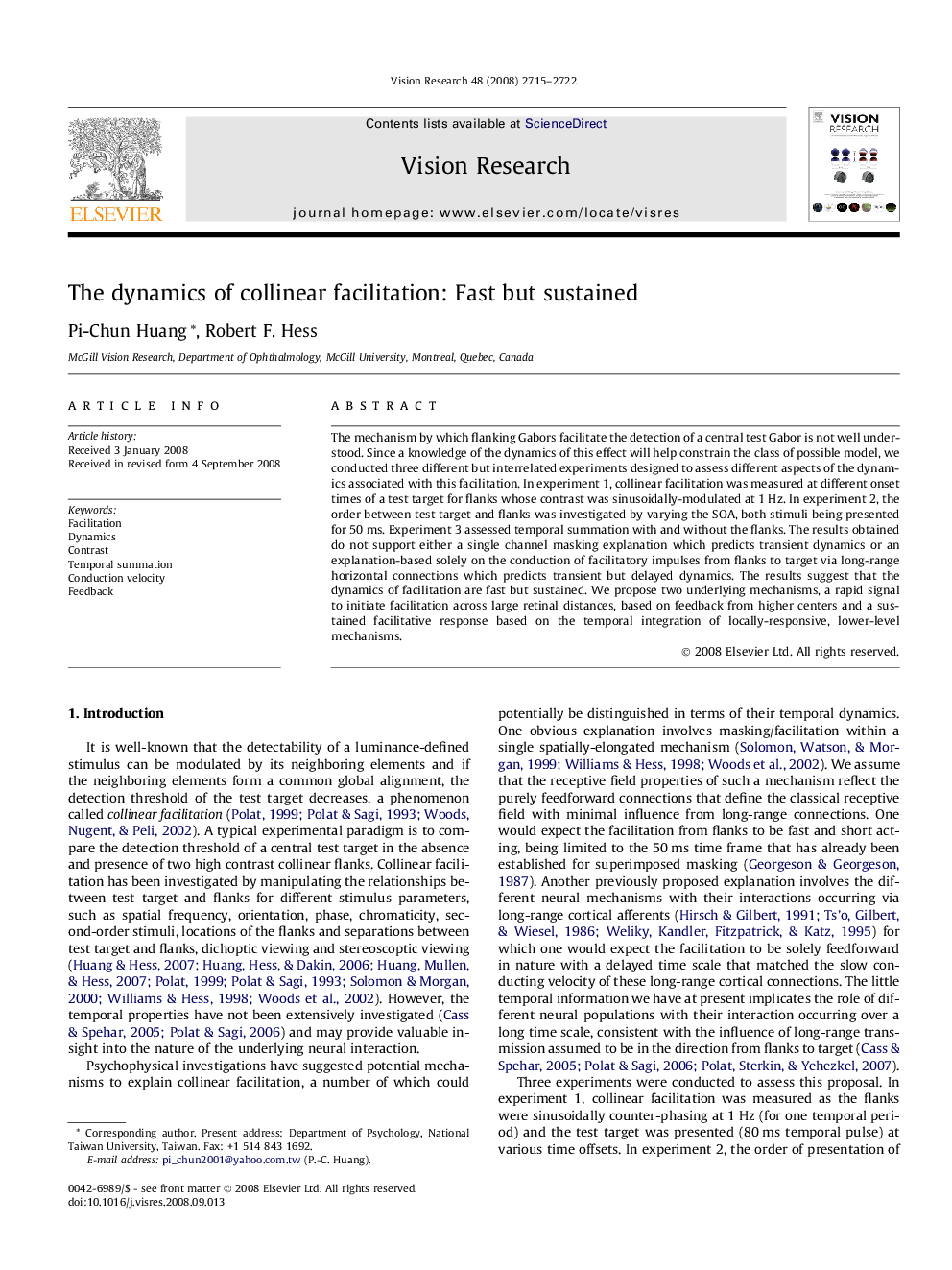| Article ID | Journal | Published Year | Pages | File Type |
|---|---|---|---|---|
| 4035046 | Vision Research | 2008 | 8 Pages |
The mechanism by which flanking Gabors facilitate the detection of a central test Gabor is not well understood. Since a knowledge of the dynamics of this effect will help constrain the class of possible model, we conducted three different but interrelated experiments designed to assess different aspects of the dynamics associated with this facilitation. In experiment 1, collinear facilitation was measured at different onset times of a test target for flanks whose contrast was sinusoidally-modulated at 1 Hz. In experiment 2, the order between test target and flanks was investigated by varying the SOA, both stimuli being presented for 50 ms. Experiment 3 assessed temporal summation with and without the flanks. The results obtained do not support either a single channel masking explanation which predicts transient dynamics or an explanation-based solely on the conduction of facilitatory impulses from flanks to target via long-range horizontal connections which predicts transient but delayed dynamics. The results suggest that the dynamics of facilitation are fast but sustained. We propose two underlying mechanisms, a rapid signal to initiate facilitation across large retinal distances, based on feedback from higher centers and a sustained facilitative response based on the temporal integration of locally-responsive, lower-level mechanisms.
